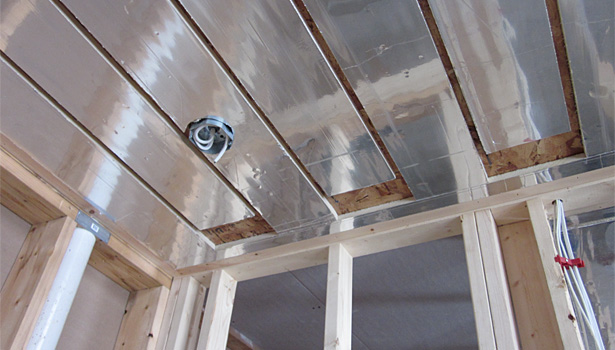Radiant ceiling heat is an energy-efficient and comfortable heating solution for your home. However, many homeowners wonder about the cost of operating this system each month. In this article, we will delve into the world of radiant ceiling heat, exploring its cost-effectiveness and factors that influence the monthly expenses.

How Radiant Ceiling Heat Works
Efficient, Silent, and Discreet
Radiant ceiling heat is a heating system that operates by using heating panels or cables installed in the ceiling. These panels emit infrared radiation, which heats the objects and surfaces in a room, creating a cozy and even warmth. Unlike traditional forced-air heating systems, radiant ceiling heat is virtually silent, discreet, and doesn’t rely on blowing hot air into the space.
Factors Affecting Monthly Costs
Understanding the Variables
Several factors can influence the monthly cost of operating radiant ceiling heat. Let’s take a closer look at these variables.
1. System Size:
- The size of your radiant ceiling heat system is a primary determinant of your monthly costs. Larger systems will consume more energy, while smaller systems are more economical.
2. Ceiling Height:
- The height of your ceiling can impact efficiency. Higher ceilings may require more energy to heat the room effectively.
3. Insulation:
- The quality of insulation in your home is critical. Well-insulated spaces retain heat better, reducing the energy required to maintain a comfortable temperature.
4. Climate:
- The climate in your region plays a significant role. Colder climates may demand more energy to keep your home warm, affecting monthly expenses.
5. Electricity Rates:
- The cost of electricity in your area is a direct factor. Higher electricity rates will result in higher monthly expenses.
Calculating the Cost
Making the Numbers Add Up
To estimate the cost of operating radiant ceiling heat per month, you’ll need to consider the system’s wattage, your electricity rate, and the number of hours the system is in use. The formula is relatively simple:
Monthly Cost = System Wattage (kW) x Hours of Operation x Electricity Rate (per kWh)
Keep in mind that radiant ceiling heat systems are zoned, meaning you can heat specific areas or rooms independently. This allows for better control over your energy consumption and cost.
Tips for Cost-Effective Operation
Savings Without Sacrificing Comfort
While radiant ceiling heat offers efficient heating, there are several tips to make it more cost-effective:
1. Zone Heating:
- Take advantage of the zoning feature to heat only the areas you’re using, saving energy in unoccupied rooms.
2. Set Thermostats Wisely:
- Program your thermostats to maintain comfortable temperatures when you’re at home and reduce the heat when you’re away or asleep.
3. Ensure Proper Insulation:
- Keep your home well-insulated to prevent heat loss and reduce the workload on the radiant ceiling heat system.
4. Regular Maintenance:
- Schedule routine maintenance to ensure your system operates efficiently and avoids any potential issues that could increase energy consumption.
Conclusion:
Radiant ceiling heat is an efficient and effective way to heat your home, offering both comfort and energy savings. While the cost per month can vary depending on various factors, understanding these variables and following cost-effective practices can help you enjoy the benefits of this heating system without breaking the bank. It’s an investment in both your comfort and your wallet, ensuring that you have a warm and cozy home during the colder months.